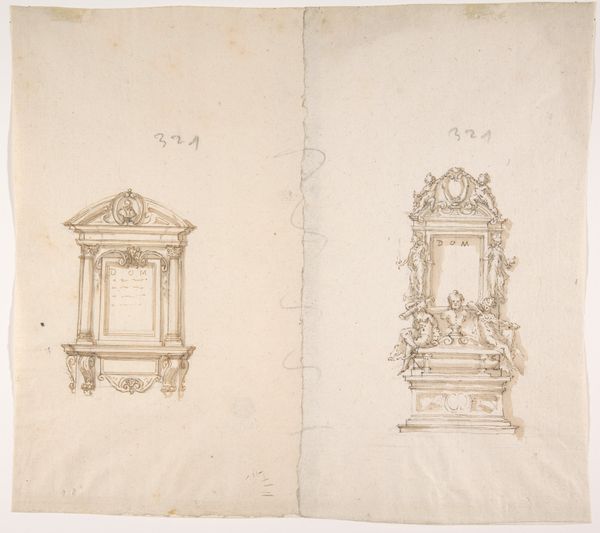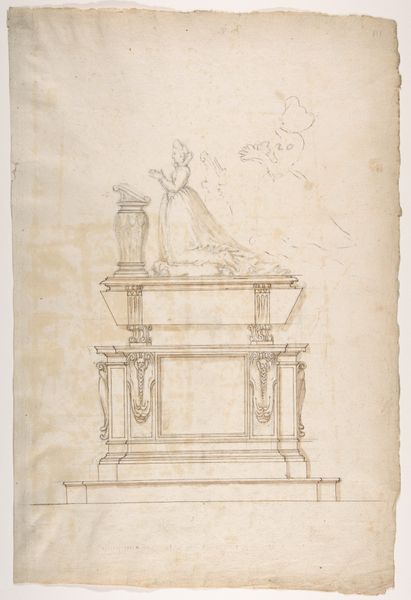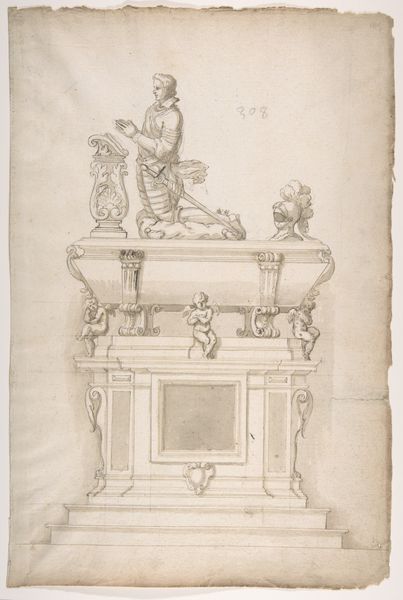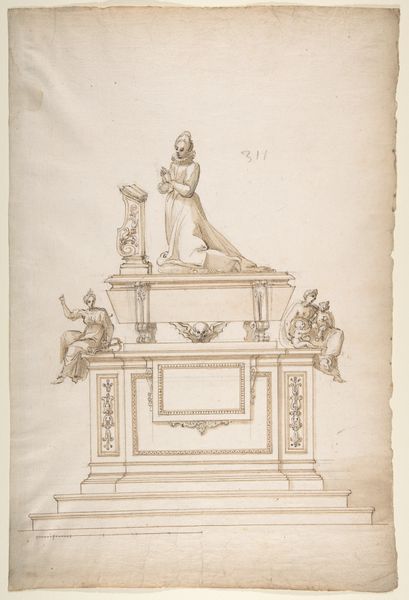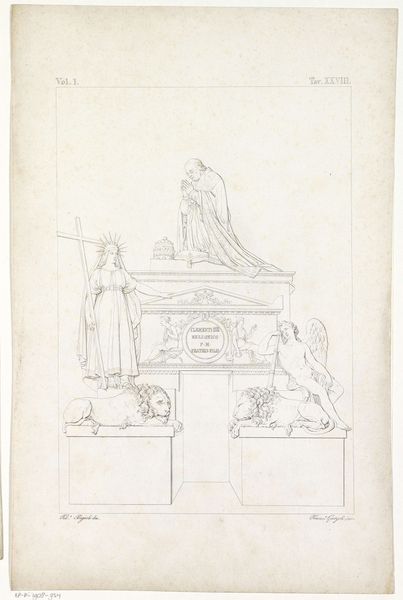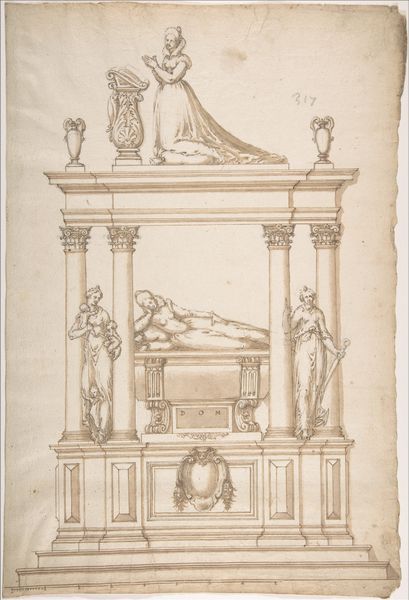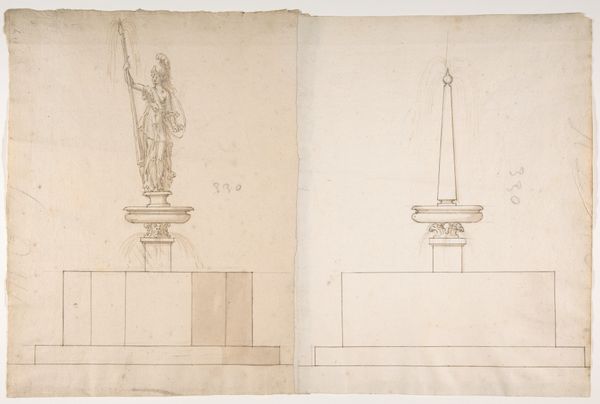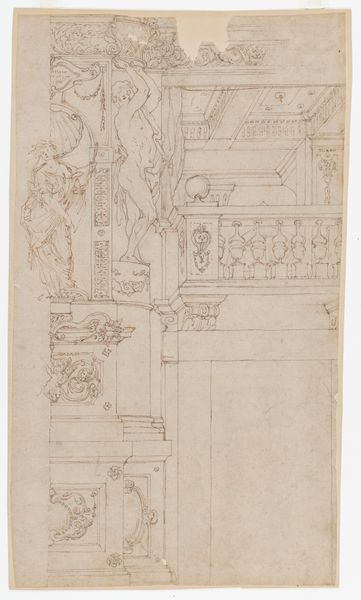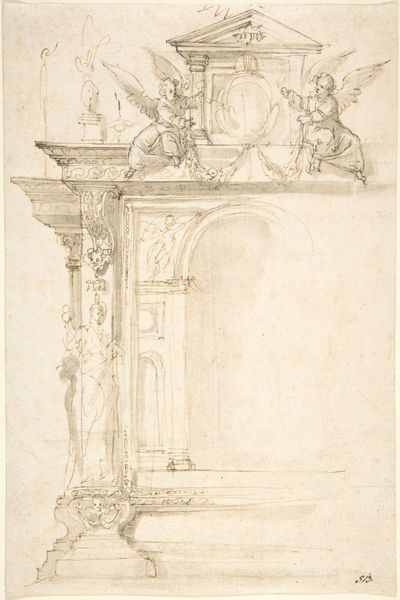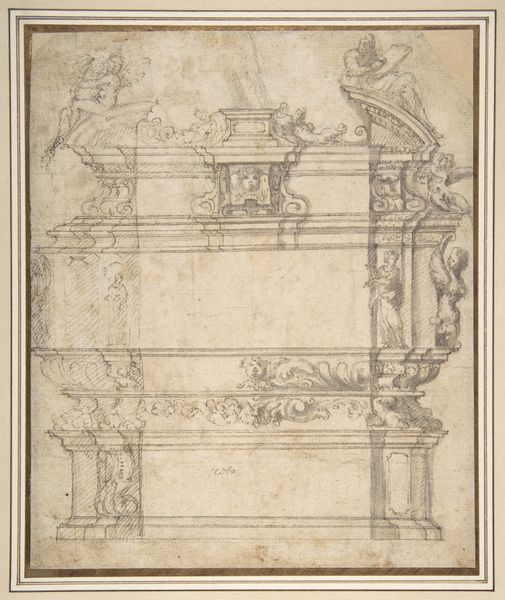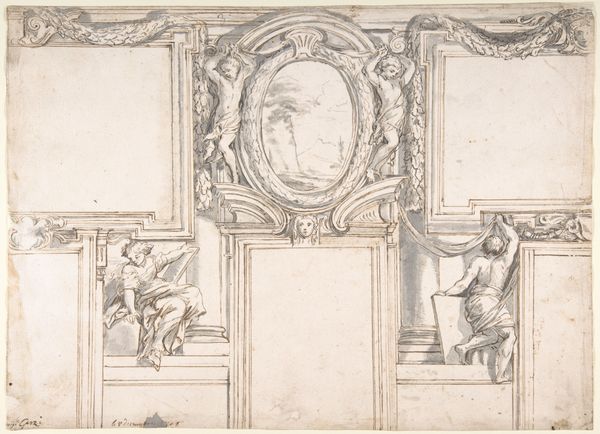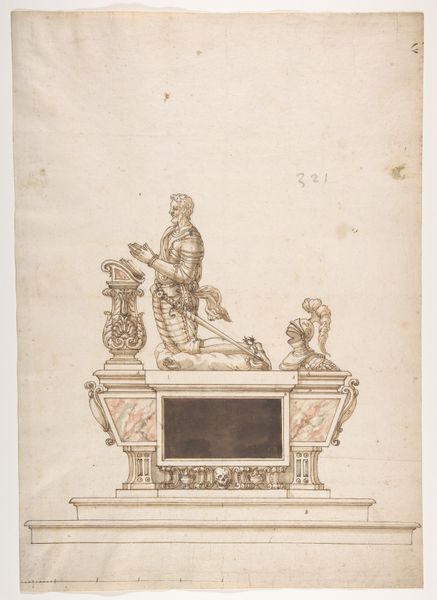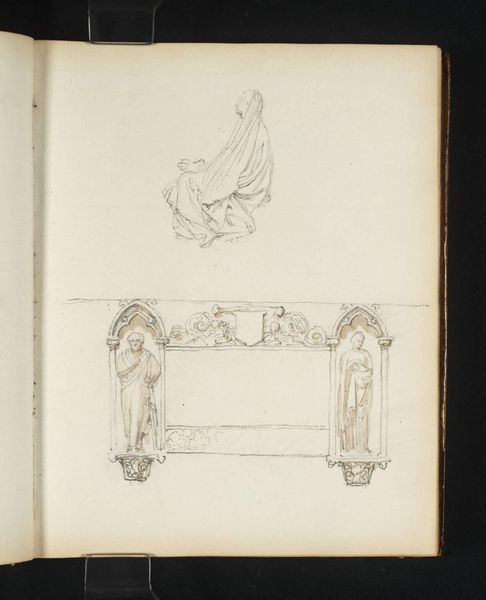
drawing, print
#
drawing
#
aged paper
#
toned paper
#
light pencil work
# print
#
personal sketchbook
#
ink drawing experimentation
#
ink colored
#
men
#
sketchbook drawing
#
watercolour illustration
#
sketchbook art
#
watercolor
Dimensions: sheet: 10 7/8 x 13 1/4 in. (27.6 x 33.6 cm)
Copyright: Public Domain
Curator: Here we have a 16th-century drawing titled "Designs for Two Tombs," currently housed at the Metropolitan Museum of Art. Though the artist is anonymous, the work offers insight into the artistic process of the era. Editor: They strike me as reverent but subdued, you know? There’s something about the thin ink lines on the toned paper that gives them a ghostly, almost ethereal quality. It is definitely missing details; you can see just bare shapes and silhouettes. Curator: Indeed, the medium – a combination of ink and watercolor on paper – contributes to the drawing's delicate nature. Notice the contrast between the solid architectural elements of the tombs and the fluid rendering of the figures. It seems to me that the solid structural representation of the tombs tries to find stability but clashes with the watercolor silhouettes of people. Editor: The composition, especially in the tomb with the kneeling figure, is all about humility and respect. The person, head bowed, seems completely absorbed. And on the second tomb, the two people watching, give you this voyeuristic view as a bystander, as if you could just sit there watching them like an audience would in the theaters. Curator: Precisely. The inscriptions on both tombs, although illegible to us, would likely offer further insight into the identity of the deceased and the intended message. However, structurally we may point out that there is symmetry in its shape that is then replicated within the image itself as part of the narrative. It follows classical structural models to ensure that the viewer gets a well structured scene, something not uncommon during those periods of artistic effervescence. Editor: It's a simple scene that transmits profound spirituality. Looking at these tomb designs brings me back to the great art piece that Leonardo DaVinci made while experimenting. These humble works open your heart, allowing you to imagine entire worlds where your creativity can find different interpretations as to where this person wanted to go while making art. Curator: A fruitful observation, it shows indeed the deep connections we may feel while in contact with any art form and shows us why it transcends beyond just colors, composition and form. Editor: Absolutely. This drawing may well serve as a reminder of our own mortality and our continuous, but sometimes troubled, relationship to what may come after our final days on this planet.
Comments
No comments
Be the first to comment and join the conversation on the ultimate creative platform.
